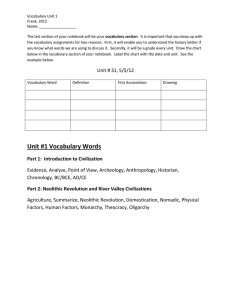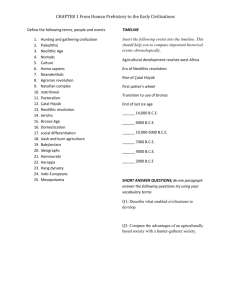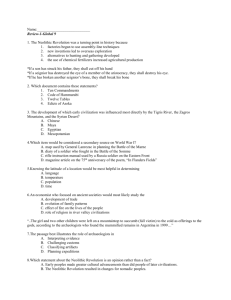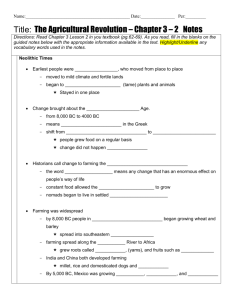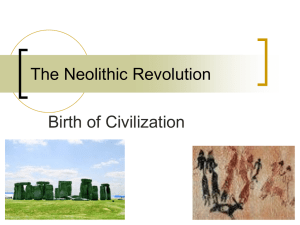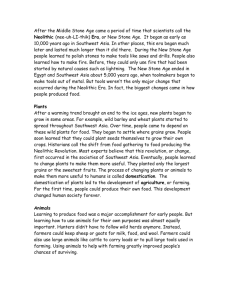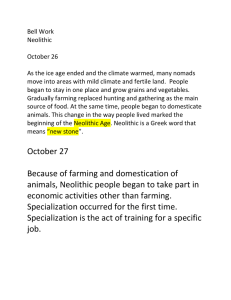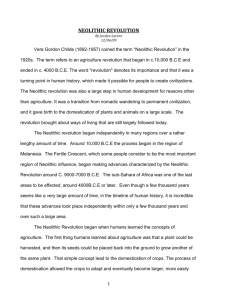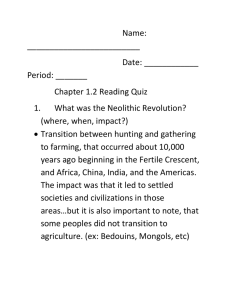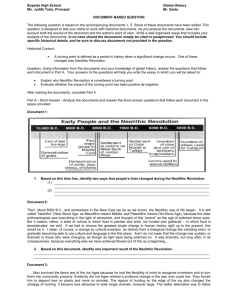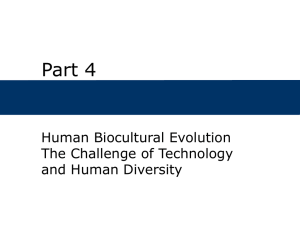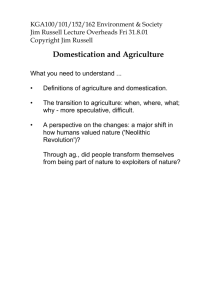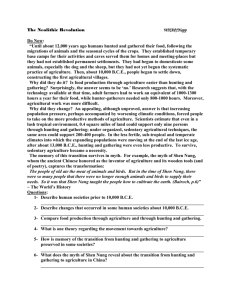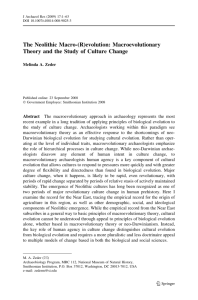Neolithic Revolution
advertisement
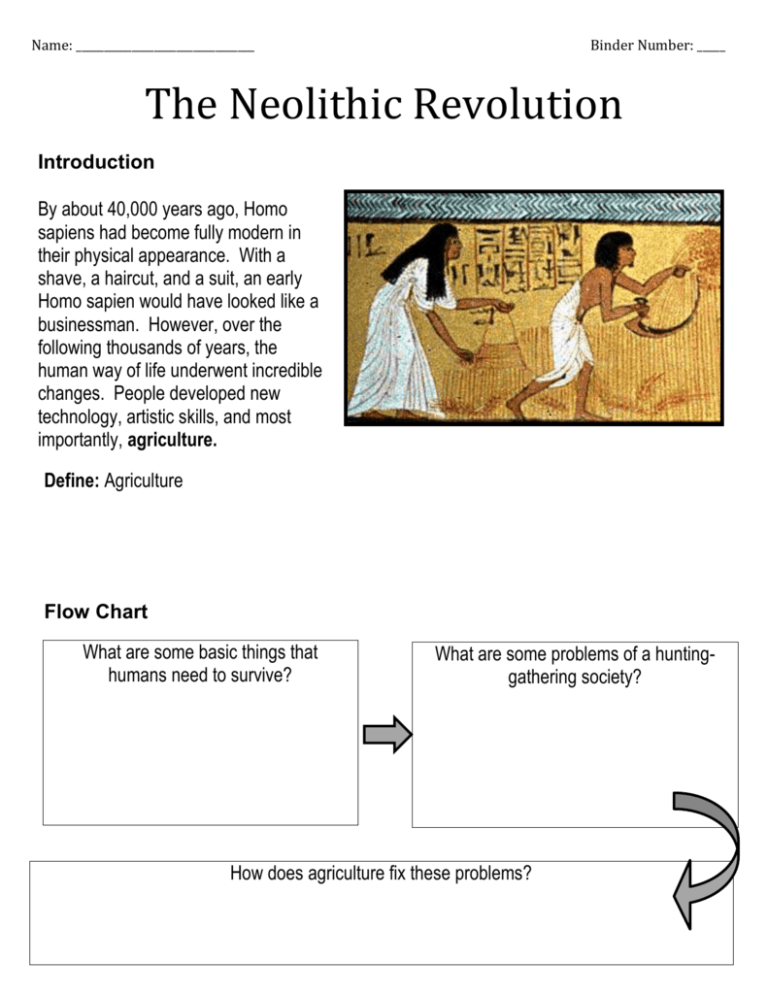
Name: ________________________________ Binder Number: _____ The Neolithic Revolution Introduction By about 40,000 years ago, Homo sapiens had become fully modern in their physical appearance. With a shave, a haircut, and a suit, an early Homo sapien would have looked like a businessman. However, over the following thousands of years, the human way of life underwent incredible changes. People developed new technology, artistic skills, and most importantly, agriculture. Define: Agriculture Flow Chart What are some basic things that humans need to survive? What are some problems of a huntinggathering society? How does agriculture fix these problems? The Discovery For thousands of years, humans of the Paleolithic Age (Old Stone Age) were nomads. Nomads wander from place to place following a food source, rather than building a permanent settlement. Nomadic people were known as hunter-gatherers, because their only way of getting food was by hunting animals or by foraging (gathering) plants. This was rather inefficient, as it took about 1,000 calories of work in order to produce 1,000 calories of food. The lack of food meant that these nomadic groups could only support around 30 people at the most, making it impossible to develop a civilization. However, this all changed with the discovery of agriculture. The Neolithic Revolution The discovery of farming was accidental. It is suggested that around 8,000 years ago nomadic people scattered seeds near a regular campsite, and then returned the next season to find new crops growing. This discovery would begin the Neolithic Revolution, or agricultural revolution, and forever change the world. The shift from a hunting and gathering culture to a food-producing culture represents one of the greatest discoveries of mankind. How can we get food? 1. 2. 3. Early Farming Methods Some groups practiced slash-and-burn farming, in which they cut trees or grasses and burned them to clear a field. The remaining ashes were then used as fertilizer. Farmers planted crops for a year or two, and then they moved onto a new area of land. After several years, the trees and grass grew back, and the farmers repeated the slash-and-burn process. Domestication Over time, people learned to change plants to make them more useful. They planted only the largest grains or the sweetest fruits because they were more desirable to harvest. Early man’s knowledge of wild animals also played a key role in the taming of wild animals. Both the selective growing of plant life and the taming of wild animals is known as domestication. Define: Domestication Types of Plants Domesticated Types of Animals Domesticated Agriculture Changes Societies The Neolithic Revolution brought huge changes to people’s lives. With survival more certain, people could focus on activities other than finding or hunting food. Domestication of plants and animals enables people to use plant fibers to make cloth. The domestication of animals made it possible to use wool from goats and sheep and skins from horses for clothes. People also began to build permanent settlements. As they started raising crops and animals, they needed to stay in one place. Then, once people were able to control the food supply, the world’s population grew. In some areas, farming communities developed into towns, most notably in the Fertile Crescent and the world’s first permanent civilization – Mesopotamia. The Neolithic Revolution led to the creation of permanent settlements Directions: In each box, list the advantage (top line) and the benefits (bottom line) of the Neolithic Revolution. Review your notes to help you with this task. Each idea should be answered in complete sentences. The Neolithic Revolution
